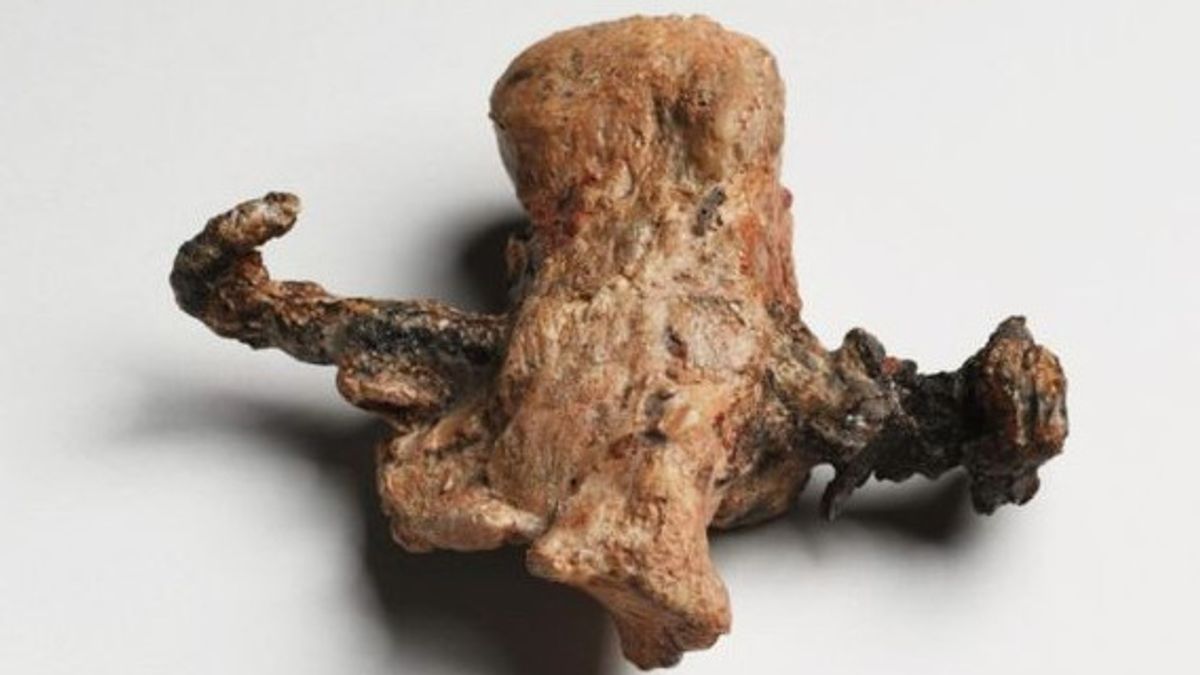JAKARTA - A shocking new study revealed that nails controversially linked to the crucifixion of Jesus Christ had ancient bone and wood fragments embedded in them. This proves, the nails were used in the crucifixion.
The nail is thought to have been found in Jerusalem, in a first-century burial cave believed to be the resting place of Caiaphas, the Jewish priest who sent Jesus to his death in the Bible.
However, sometime after the cave was excavated in 1990, the nails were gone.
However, filmmaker Simcha Jacobovici in the 2011 documentary film, Nails Of The Cross, claims he found the nails that were used to crucify Jesus.
At the time, experts dismissed the claim, denying that the nail Jacobovici found was the same nail from Caiaphas's tomb.
However, now a new study has concluded that the nails were indeed the same - and may also have been used to crucify someone.
Its lead author, Dr Aryeh Shimron, made the astonishing findings after comparing the material from the nails with material from the tomb's ossuary - the limestone box used to store the bones of the dead.
"The material that fills a cave differs subtly from cave to cave depending on the topography, soil composition in the area, the microclimate and the surrounding vegetation," said Shimron as quoted by the Daily Star, Friday, October 23.
"As a result, the cave has different physical and chemical characteristics. The physical and chemical properties of the material which, over the centuries, had invaded the tomb and its ossuary were investigated. "
"Our analysis clearly and unequivocally shows that these materials are chemically and physically identical to the material which, over the centuries, is also attached to the nails."
Caiaphas' cave is the only one that fits the nails of the 25 tombs tested, Dr. Shimron mentioned.
He continued, they also found fine pieces of wood growing in the rust of iron oxide on the nails. The piece of wood is well preserved and completely petrified.
"Therefore the wood is ancient and not coincidental or man-made false bonds to the nails. In the rust and sediment that sticks to the nails, we also identified and photographed a number of microscopic bone fragments," explained Dr. Shimron.
For Dr Shimron, a retired geologist who worked for the Geological Survey of Israel, this is compelling evidence.
It is also important that the nails used in crucifixion were once considered to have powerful healing properties, and were therefore kept as amulets.
Because of this, the nail may have been deposited by the repentant Caiaphas, says Jacobovici.
He further argued that the relics would be sufficient to attach a human hand to the crossbar, and that they might be bent in the end to prevent the condemned person from releasing himself.
But Dr. Shimron stopped connecting nails with Jesus.
"The evidence that nails were used in crucifixion was powerful," he said.
“But the only evidence we have that they were used to crucify Jesus in the Gospels is that they were found in Caiaphas' tomb.

"Is our evidence enough? I really can't say, I chose to rely on good science over speculation. "
The Israeli Antiquities Authority (IAA) has always maintained that the nail in question is not from Caiaphas' grave.
And while authorities acknowledge that the new study is "interesting and provides food for thought", a spokesman said that "unambiguous historical conclusions are somewhat problematic".
Their statement reads: “It seems plausible that the nails mentioned in the study did indeed come from a cave in Jerusalem that were from the same period.
“However, the direct connection to this particular cave has not been proven.
“In fact, even if a link is found, we still cannot confirm that the cave is indeed the burial place of High Priest Caiaphas.
"Questions have arisen in the past about, for example, the simplicity of the cave, which is incompatible with this individual's highest social status."
The statement continued: “The official opinion of the IAA is that the nail could be used on any of the hundreds of people who broke Roman law and experienced this type of execution.
"It therefore appears that any conclusions that do not derive directly from these findings should be scrutinized with the scientific tools available to researchers at this time."
Today, there is only one incontrovertible example of human remains from the crucifixion, discovered in 1968, when archaeologists found a heel bone with a nail still embedded in it.
"Identifying the two nails from the crucifixion in the archaeological context of Caiaphas' tomb is very important for history and even more so for the early Christians," said Dr. Shimron.
The Cave of Caiaphas is found in the Peace Forest of Jerusalem, south of the city. Since then, access to the cemetery has been paved by the local government.
One nail was found on its floor, near the intricately decorated ossuary of Caiaphas, while another nail was found in another that does not bear his name.
The English, Chinese, Japanese, Arabic, and French versions are automatically generated by the AI. So there may still be inaccuracies in translating, please always see Indonesian as our main language. (system supported by DigitalSiber.id)












